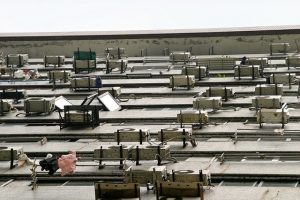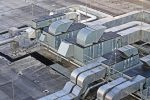An HVAC tech, a plumber, and an electrician’s responsibilities overlap at times.
As such, it can confuse someone who doesn’t know which career path to take.
In this guide, you’ll be given a comparative overview of the three to help you in the decision-making.
Based on the skills you possess, you can choose the career that will help you grow and realize your full potential.
Similarities and Differences between an HVAC Technician, a Plumber, and an Electrician
Take a look at the table below for a comparison of the three professions.
| Scope | HVAC Technician | Plumber | Electrician |
| Job description | Work on HVAC systems to control the temperature and air quality | Install and repair water, gas, and other piping systems | Install, maintain, and repair electrical power, communications, lighting, and control systems |
| Common responsibilities | Install, clean, and maintain HVAC systems Install electrical components and wiring Inspect and test HVAC systems and components Discuss system malfunctions with customers Repair or replace worn or defective parts Recommend maintenance to improve system performance Keep records of work performed | Prepare cost estimates for clients Read blueprints and follow state and local building codes Determine the materials and equipment needed for a job Install pipes and fixtures Inspect and test installed pipe systems and pipelines Troubleshoot malfunctioning systems Maintain and repair plumbing systems | Read blueprints or technical diagrams Install and maintain wiring, control, and lighting systems Inspect electrical components, such as transformers and circuit breakers Identify electrical problems using a variety of testing devices Repair or replace wiring, equipment, or fixtures using hand tools and power tools Follow state and local building regulations based on the National Electrical Code Direct and train workers to install, maintain, or repair electrical wiring or equipment |
| Workplace locations | Homes Schools Stores Hospitals Office buildings Factories | Homes Businesses Factories Other places with pipes and related systems | Homes Businesses Factories Construction sites |
| Education | HVAC programs offered in technical and trade schools or community colleges | Plumbing courses offered in vocational-technical schools | Electrician courses offered in technical schools |
| Program length | 6 months to 2 years | 2 years | Certificate programs – less than 1 year Associate’s degree – about 2 years |
| Training | On-the-job training as part of the program OR 3- to 5-year apprenticeship program | 4- to 5-year apprenticeship program | 4- to 5-year apprenticeship program |
| Important personal qualities | Customer-service skills Attention to detail Math skills Mechanical skills Physical strength and stamina Time management Troubleshooting skills | Communication skills Dexterity Mechanical skills Physical strength Troubleshooting skills | Color vision Critical thinking Customer-service skills Physical strength and stamina Troubleshooting skills |
| Certification and license | EPA certification exam Need for a licensure exam will vary by state | Licensure exam for:
| Licensure exam for:
|
| Average salary | Hourly – $23.38 Annually – $48,630 | Hourly – $28.79 Annually – $59,880 | Hourly – $28.87 Annually – $60,040 |
| Job outlook (from 2020 to 2030) | 5% projected growth | 5% projected growth | 9% projected growth |
Information sourced from the U.S. Bureau of Labor Statistics, with all figures as of May 2021
Takeaway
All three professions are in demand on the market today.
So, you should rely on your mindset, skills, and expectations to make a clear and decisive career choice.
Remember: Building and environmental codes are becoming stricter.
It has now increased the demand for qualified and committed experts in all three fields.
This page is also available in Spanish.










